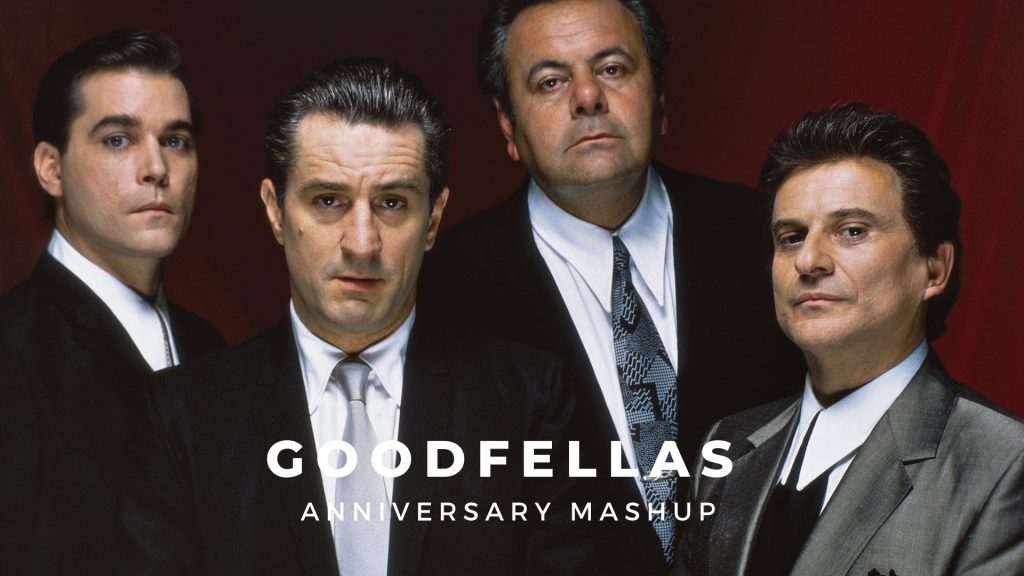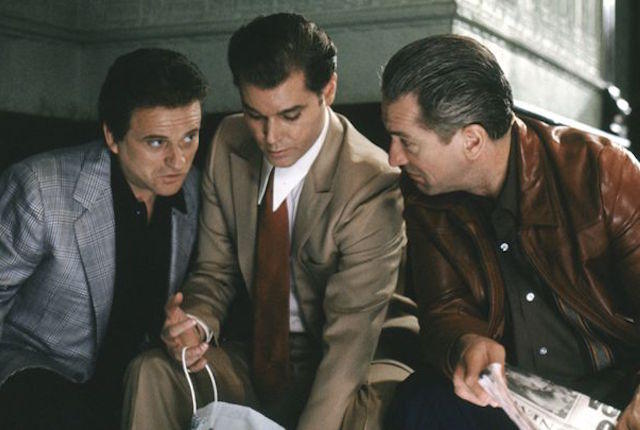When it comes to the greatest Mafia films, “Goodfellas” certainly can’t compare to the monument that is “The Godfather.” However, the film has made enough of a name for itself to be called the ‘runner-up’ in this crime film genre. Released in 1990 at a time when Hollywood was filled with works about gangsters like “The Godfather III,” “Miller’s Crossing,” “King of New York,” and “Men of Respect,” “Goodfellas” stands out from the rest and ranks alongside the first two “Godfather” films as one of the greatest crime films of all time.

A masterpiece adaptation, a new class of “antiheroes”
Like “The Godfather,” “Goodfellas” is also an adaptation. While “The Godfather” romanticizes the world of gangsters as honorable figures, settling scores with their enemies to preserve their honor, “Goodfellas” is much more gritty and raw. In fact, the characters in “The Godfather” are portrayed as heroes, knights in the night, which is not the case with Scorsese’s gangster characters: they are cold, ruthless, and sinister. Based on the book “Wiseguy: Life in a Mafia Family,” focusing on the rise and fall of the Lucchese family – the most notorious Mafia organization in New York in the 1960s and 1970s, through real stories and real events shared by a former member of the gang, Henry Hill, and the screenplay meticulously crafted by Martin Scorsese and the book’s author, Nicholas Pileggi, down to every word through 12 revisions, “Goodfellas” almost transports the audience back in time to the heyday of the underworld in the United States.

The story is told from a first-person perspective about the once-famous gangster, Henry Hill. Audiences will learn more about the person and the thoughts of a true player. Hill first got involved with the mob when he was just 11 years old and grew up in a world of money, booze, guns, and beautiful women. Even from his school days, Hill always dreamed of becoming a real gangster: “From the time I was a kid, I always wanted to be a gangster. To me, being a gangster was better than being President of the United States.” Witnessing what those mafia guys had, how they maneuvered the chessboard and tainted real justice, we won’t be surprised anymore but instead, empathize with the character’s psychology and thinking. From here, a new perspective is opened up for us, a hidden angle that many people often ignore or accept: a world of disobedient mafia, where money is considered trash, and human lives are treated like garbage.
It is known that at that time, director Martin Scorsese – the “boss” of the gangster film genre – vowed not to make any more heist films, until he read a review of the book “Wiseguy.” This review inspired him to read the book while he was still working on the set of “The Color of Money” in 1986. He immediately became captivated by Pileggi’s book and once again fascinated by the gangster lifestyle. Scorsese believed that this book portrayed the most authentic picture of the gangster world he had ever read.

Be surprised once again, not by the story Scorsese wanted to tell but by how he wanted to tell it. Scorsese convinced Pileggi that the film would not follow the traditional ABC storytelling structure (Linear) but that he wanted to approach this gangster story in a non-linear fashion. Scorsese applied a storytelling style like the opening scene of the classic film “Jules and Jim” (1962), and all the basic techniques from the French New Wave films of the 1960s, would be applied to “Goodfellas.”
From here, a significant leap occurred not only in the crime film genre but also in Hollywood as a whole. It connected the past and the future in some important ways. If it’s true that every great work of art ends one genre and opens another, then “Goodfellas” could be considered the pinnacle of the tradition that “The Godfather” represents and an important link between the new Hollywood cinema of the 1970s and what we now think of as the golden age of TV. It changed the audience’s perspective on the old film genre – the tension between defining our emotions for the characters and judging their actions morally – to a more multifaceted perspective, where we are the characters in the film and it turns out that the wild outlaws can be kind-hearted family men, and revered priests can be easily corrupted.
Is there a difference between life and film??!
Henry Hill
Contrary to Hill, the path to becoming a criminal has never been clearer. At first, it was just delivering for old Paul “Paulie,” writing down the numbers, and doing sabotage as needed for money. For a kid, doing such simple tasks and getting paid handsomely, being treated specially wherever he went, having authority, and teasing anyone he didn’t like, isn’t that pure bliss? Not to mention being protected by a Brooklyn boss, what more could you ask for?

Gradually, he becomes connected with his “good brothers,” Jimmy Conway (Robert De Niro) and Tommy DeVito (Joe Pesci). From here, all three are drawn into the whirlpool of love, money, prison, and crime. To put it bluntly, one’s living environment influences how they turn out. Living in a neighborhood where theft and bribery are commonplace, where an Italian restaurant owner turns out to be a notorious womanizer who desires to be a gangster rather than a president, is all too normal. Then the big “jobs” happen, and more importantly, something inevitable in the criminal world occurs: murder and drugs.

Changing the perspective reveals Scorsese’s brilliance when he shows that the allure of the gangster world can change even those who seem “good.” He accurately portrays a world of violence, darkness, yet also incredibly inviting with power and money on the screen, allowing the audience to judge the characters and their actions rather than preaching ethics or sending messages. Actor Ray Liotta’s performance as Henry Hill is outstanding, as he not only portrays his character but also convinces everyone how well-suited he is for the role. After being cast as the lead, Liotta listened to cassette tapes of Henry Hill’s voice recordings every day on his way to the set until he memorized the character’s speech patterns!
Jimmy Conway
As the actor who collaborated with Scorsese the most, veteran actor Robert De Niro worked with him on 9 films, starting with “Mean Streets” when director Brian De Palma introduced De Niro to Scorsese. De Niro won an Oscar for his lead role in “Raging Bull,” and his name is closely associated with mafia bosses. When watching “Goodfellas,” everyone is likely to be impressed by the style of the character Henry Hill or his mentor: Jimmy Conway – a gangster with an extremely sophisticated demeanor portrayed by Robert De Niro. It is known that Al Pacino was initially offered the role of Jimmy Conway, but he declined because he was afraid of being typecast as a gangster. Ironically, in the same year, Al Pacino took on another gangster role – the eccentric Big Boy Caprice in Warren Beatty’s “Dick Tracy” (1990). Later, Al Pacino admitted that he regretted this decision.

It’s easy to see that his character stands out with cunning, ruthlessness, and a willingness to do anything to achieve his goals, from betraying the boss to eliminating friends and associates. What’s even more frightening about him is his readiness to kill his loyal subordinates when facing adversity. Few can enjoy 4 years in prison like him and then emerge even more dangerous and ruthless. It must be said that the character of Jimmy Conway is not just a mobster but also a terrifying force that we cannot imagine the horror of if not for Robert De Niro’s portrayal.
Tommy DeVito
In contrast to Hill, Joe Pesci’s character, Tommy, is a true psychopath, ready to explode and kill over the smallest things. Pesci was known as a comedian before, but in “Goodfellas,” he truly becomes a fearsome “little devil.” Few who have seen “Goodfellas” can forget the scene where he threatens his associates, saying, “You think I’m funny?”. In 1991, Joe Pesci was awarded the Oscar for Best Supporting Actor for his spontaneous performance. He is an inhumane character willing to kill over trivial matters, unable to control his anger to the point of brutally killing a bloodthirsty Italian Mafia member, only to face a gruesome fate.

This was a bold casting choice by Scorsese, as Pesci’s stature did not match that of the real Tommy DeVito, and Pesci’s face and style were more suitable for a comedy role than that of a cold-blooded, ruthless killer who sees murder as a game. However, Pesci delivered an outstanding performance to the point that when Henry Hill watched the film, he also had to admit that, if not for the appearance, Joe Pesci accurately portrayed the character of Tommy DeVito by 99%. Joe Pesci’s Oscar acceptance speech was the third shortest in Oscar history. Pesci simply said, “It’s my privilege, thank you.” Later, Pesci admitted that he didn’t expect to win, so he didn’t prepare a speech! Premiere magazine ranked Joe Pesci’s character, Tommy DeVito, 96th on its list of the 100 Greatest Movie Characters of All Time, calling Tommy “…perhaps the most unredeemable character ever put on film!” On a side note, Joe Pesci also played the role of a burglar in the famous childhood film “Home Alone.”

Deserving of a Gangster Masterpiece
“Goodfellas” captivates audiences with its sharp and profane dialogue that feels incredibly authentic and true to life. Many of these dialogues were improvised by the actors during script rehearsals and were recorded by Scorsese. In June 2008, the American Film Institute announced its “Ten Top Ten” list – the top 10 greatest American films in 10 classic film genres – as voted on by 1,500 artists and creative professionals. “Goodfellas” was recognized as the second-best film in the gangster genre (after “The Godfather”).
In 1986, Scorsese called author Pileggi after reading “Wiseguy” and expressed his admiration, saying, “I’ve been waiting for this book my whole life.” Pileggi responded with a smile, “I’ve also been waiting for this phone call my whole life!” With “Goodfellas,” Martin Scorsese proudly told his colleagues, “John Ford made Westerns, and I make street films.” And the audience is grateful that fate brought these two masters together, resulting in a masterpiece called “Goodfellas.”































